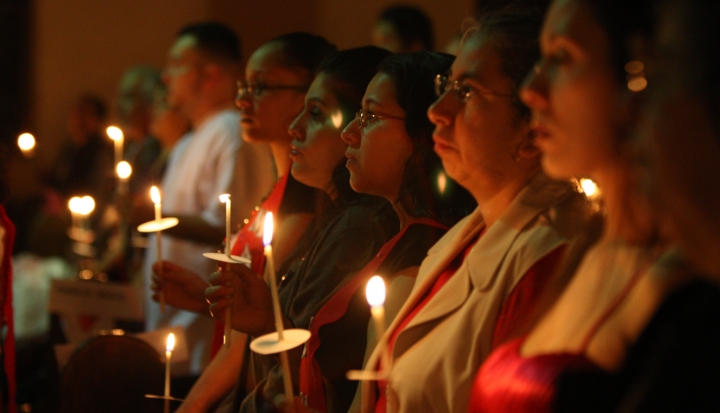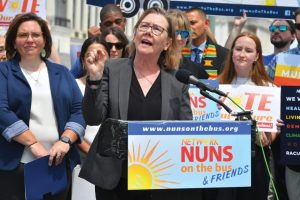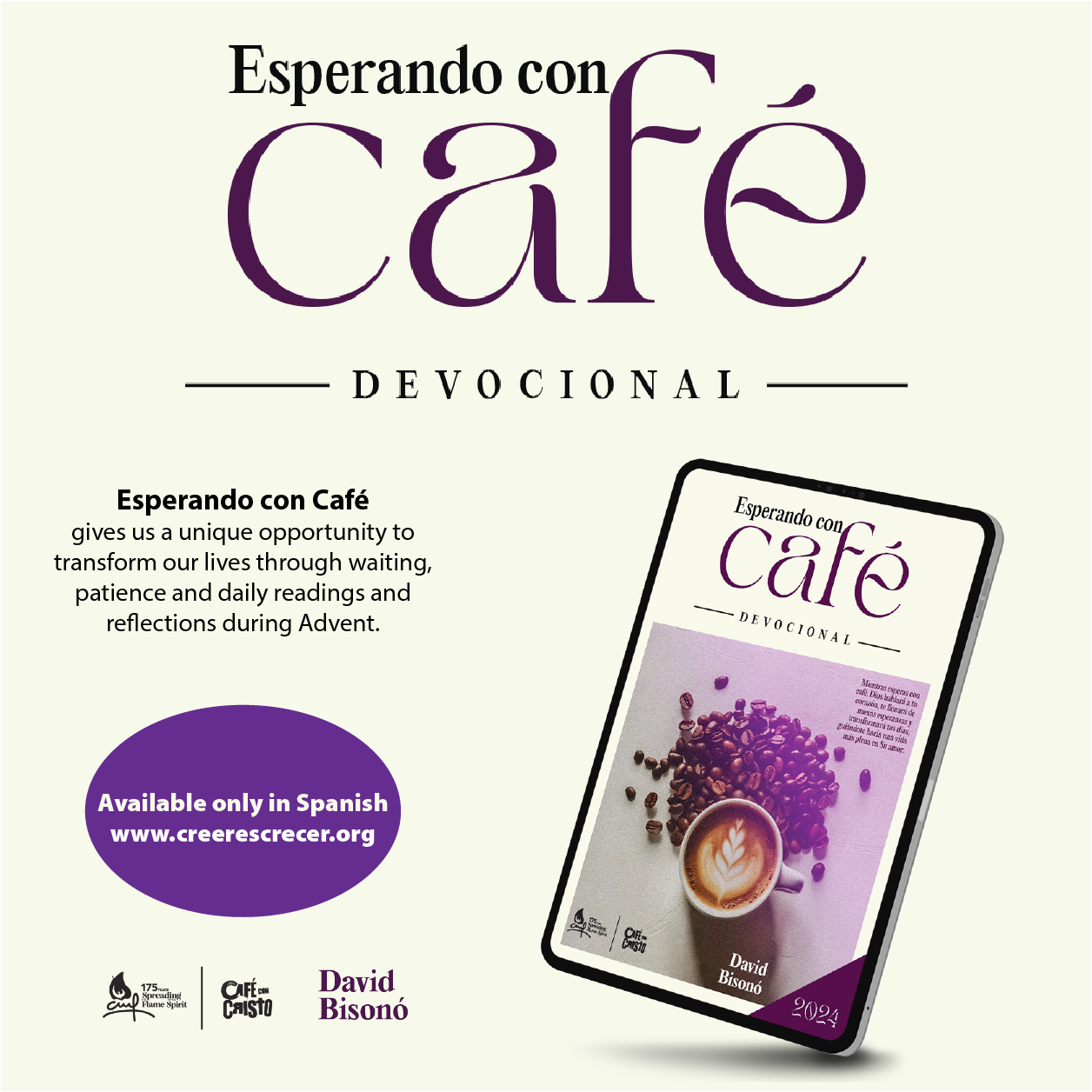It’s past time for the U.S. Catholic Church to make Hispanic ministry, especially to second-generation Latinos, a priority in everything we do.
When Catholic parishes notice uncomfortable tensions between parishioners of different backgrounds, one of the people they call in as a “fixer” is University of Notre Dame theologian Timothy Matovina. Parishes that want to get better at dealing with their lack of unity, says this expert on Latino Catholicism, must move away from thinking they should provide a “welcome” to fellow Catholics of other ethnicities.
“When your parish tells its Hispanic parishioners, ‘You’re welcome here,’ it comes across to them as: ‘This is ours, and you’re a welcome guest, but you’re still just a guest and you don’t belong,’ ” he says. According to Matovina, parishes need to change their approach from one of hospitality to one of homecoming.
“A lot of English-speaking Catholics never stop to think about it: Why is the Spanish Mass always at 2 p.m.? Whose statues are going to be out in the primary worship spaces? Who makes the decisions here . . . ? Sometimes it’s something as mundane as who has the keys.”
Although not a Latino himself, Matovina for many decades has grounded both his scholarly work and his faith journey within the Latino experience. The executive director of Notre Dame’s Institute for Latino Studies is the only “honorary Latino” to have received the prestigious Virgilio Elizondo Award of the Academy of Catholic Hispanic Theologians of the United States. He is the author most recently of Latino Catholicism: Transformation in America’s Largest Church (Princeton University Press, 2012).
What do you see as the greatest challenge in Hispanic ministry today?
I would say it’s in effectively reaching the second and third generation, the English-speaking Latino Catholic. A lot of young Latinos are struggling with living in two worlds, the world of their parents’ Hispanic roots and the world of their peers in the United States.
The most important statistic Catholics need to know is that nearly 70 percent of Latinos in the United States are not immigrants. And in the next 30 years, the number of second-generation Latinos will double and the number of third-generation Latinos will triple. The percentage (though not necessarily the actual number) of first-generation Latino immigrants is going to go down.
We tend to think of Hispanic ministry as immigrant, Spanish-speaking ministry, and certainly immigration is the civil rights issue of our day, as Los Angeles Archbishop José Gómez has said. Our work with Spanish-speaking immigrants has been one of the Catholic Church’s strengths. We know what to do with them. We have a Spanish Mass and the language, culture, and devotions they’re used to.
Immigrants are hungry to have a place to belong in a land that’s strange and new to them, so a good preacher with a good choir equals successful Hispanic ministry anywhere there are Spanish-speaking immigrants. They’ll flock. They’ll drive literally tens of and even a hundred miles to get to that Mass where they’ll feel that life.
But we’re weaker once you get to the second and third generation. Young Latinos are the largest number of second-generation people with non-English-speaking parents or grandparents in the history of U.S. Catholicism, and we are now right in the middle of that generational transition.
They may be speaking English, but they are often attached to elements of their culture that are very present in how they practice their Catholic faith.
How are we going to hand down the faith to those young people, given the culture we live in and the depleted resources we have in many places? These young Latinos are already the majority of Catholics under 25 in this country.
Clearly young Latinos are crucial for the present and the future of U.S. Catholicism. And currently we are not ministering to them well enough. One clear indication is in the data that show that the Catholic affiliation among Latino teens goes down significantly from 74 percent in the Spanish-speaking immigrant group to 57 percent among primarily English-speaking Hispanic teens.
So if we’re generally not doing a good job of passing on the faith to young Latinos, are there any examples of people getting it right?
The group that has to be lifted up as having done the best work in Hispanic youth ministry is Instituto Fe y Vida, a national Catholic leadership institute based in Stockton, California that is focused on young Hispanics. They’ve done a lot of leadership training around the country.
But like everyone else, they too tend to be more successful with what is called pastoral juvenil, working with Spanish-speaking immigrant youth. Often they are the most hungry for formation and ministry. A lot of times their families are still back home, so they’re looking for a family, a home here. And they find it in the church or the youth group, or they form their own group.
It’s amazing how many young Latinos, often through charismatic renewal, form their own groups, because they’re just hungry to come together. It’s these many different initiatives by Hispanic youth themselves that need to be given the most credit.
When my wife and I lived in Los Angeles we went to St. Clement Parish, which had a Latino youth group that started out with maybe a dozen members and grew to be 50 regulars and then more. It was entirely run by the young people themselves. In fact, sometimes the pastor invited me to go speak with them to try to infuse different kinds of Catholic faith formation and theology because they were very focused on a basic evangelical message. They were very interested in the Bible and had lots of energy and enthusiasm.
There are pockets of these stories all over the place. The challenge for pastors, dioceses, and bishops is: How do we harness this energy? How do we make these initiatives more a part of the life of the parish and the diocese?
There has been a push in recent years to increase Hispanic enrollment in Catholic schools. What’s at stake here?
Only 3 percent of Latino children go to Catholic schools. In the 1950s, 50 percent of the Catholic children in this country were in Catholic schools.
In 2009 the Notre Dame Task Force on the Participation of Latino Children and Families in Catholic Schools presented its report with a strategy to double the percentage of Hispanic students in Catholic elementary and high schools from 3 to 6 percent by the year 2020.
This is very important in terms of developing more Hispanic leaders for the Catholic Church. People trained in Catholic schools are much more likely to become leaders in the church. When you ask people from my generation who are actively involved in parishes—as permanent deacons, lectors, eucharistic ministers, in outreach to the poor, social ministries—most of them have had some kind of Catholic education. Catholic education has a lifelong effect. So we do need to get more Latinos into our schools.
So where do things stand today with regard to Hispanic leadership in the Catholic Church?
Whether you’re talking about bishops, priests, religious, or lay ecclesial ministers, Latinos are underrepresented in every single leadership category in American Catholicism, except one.
While Latinos today are 35 to 40 percent of the Catholic population in the United States, they represent only 7.5 percent of Catholic priests and 10.5 percent of active Catholic bishops.
Recent increases in Hispanic priests and seminarians fall far short of keeping pace with Hispanic population growth, and the shortage is most acute when it comes to the meager number of U.S.-born Hispanic priests who could best accompany the growing ranks of second- and third-generation young Latinos as they navigate between their two worlds.
The one exception to the rule is lay leaders who are currently enrolled in diocesan certificate programs that qualify them for lay ministry in the church. Latinos make up 43 percent of those formation programs, in part because a lot of dioceses now have them in Spanish and they’re affordable and geographically accessible.
What this shows is that when programs are available, Latinos are hungry for leadership, they’re hungry to learn. When I gave my first workshops in Spanish at the Los Angeles Religious Education Congress, we had 4,000 people. Of course, I don’t know how something with 4,000 people can still be called a “workshop.”
The key question this poses for the church is: How do we channel the Latinos who have this great desire for faith formation into viable ministry positions in parishes and dioceses?
How does this new reality of lay ministry play out in parishes?
In many parishes it has led to the following scenario: The parish’s director of religious education (DRE) is not Hispanic but has good training, a master’s degree, and is well prepared to do faith formation. She is running an English-language program with, let’s say, 600 young people, children to teenagers.
Then along comes a Hispanic parishioner who notices, “Well, a lot of Spanish-speaking people in this parish aren’t getting catechesis,” so she starts a little program. Before you know it, that program has grown to twice the size of the English-language program, but this person just continues to do it all as an unpaid volunteer, out of her desire to serve.
Often tensions arise between the two, because one will see Spanish-language catechesis as desirable in itself, while the DRE may only see it as a way station for learning English until people can come to the “regular” program.
So if you were the pastor in that parish, what would you do?
Well, in this specific case, if the money’s available, I would look at providing equal or proportionate financial resources to the Hispanic community.
Often a Hispanic person is hired as the assistant to the DRE. Is there a way they can be co‑DREs so that they both have an equal voice in the decision making processes that affect faith formation in the parish?
But isn’t there also a value in the Latino lay leader having the kind of formation that the DRE’s master’s degree certifies?
There is. And a challenge we have at Notre Dame is: How do we actually get these folks into our theology programs?
There are the considerable obstacles of finances and geographic accessibility, but for many Latinos the biggest obstacle is academic credentials. It’s been really frustrating to me in my professional life of more than 30 years in universities that it’s so hard to move beyond our academic standards so that we can allow in people who are clearly ready to do theological work but might not have the prerequisites.
The advantage of a master’s program is that you can do it in 30 or 36 credit hours. But if you don’t have a bachelor’s degree yet, it’s 120 credit hours. And if you have to do it on a part-time basis, you’ll be going to school forever.
At least for the pastor there’s no minimal requirement of a certain academic degree to minister in the church, so how can he get the right person for his Hispanic religious education program?
I think pastors and dioceses need to focus on the diocesan formation programs. I’m not talking about the person who’s just going to the annual diocesan religious education event. I mean the person who enrolls in the diocesan program that prepares people to become master catechists. They’re called different things in different dioceses.
I would tell the pastor to encourage parishioners to enroll in those programs and to be involved with those folks. Meet with them, and consider it your duty to know how their spiritual formation is going and what their abilities are. And when they complete their courses, celebrate that in the parish and work with them so they can take what they’ve learned and do something valuable in the parish.
A lot of these folks end up starting their own prayer group or other things on their own, because they haven’t really been encouraged to do something in the ministry of the parish.
Another big problem is that there are more people who are in formation programs for lay ministry today than there are lay ministers working in the church, so they’re not all going to get jobs. And that applies to Latinos as well, unless we suddenly get a big influx of cash in parishes, which is not likely.
It seems that as a church we’ve been grappling with this for decades now. Why do we still have those difficulties both at the parish and at the university level? Shouldn’t we be farther along by now?
It does seem that we are very slow-moving. I think a lot of mainline churches in this country—and that includes middle-class Catholics—are kind of in maintenance mode. For those of us who are of European descent, our immigrant ancestors needed the church for many things that today we can get outside the church—social life, education, orientation to life in this society. In the old immigrant parishes the church was everything.
When you get to the middle class, you don’t really need the church for all that stuff. You can get it on your own in many different ways. So these churches can tend to get into maintenance mode.
But the Latino church is not in maintenance mode; it’s in mission mode. They’re all about starting new initiatives and getting things going. In the parish scenario we just discussed, the pastor may just be thinking, “I’ve got all this other stuff going on, but we’ve got all these kids. Who can I get so the catechesis is off my desk?” I’m sorry to put it that bluntly, but that’s often what happens.
And in the universities we’re all trying to get higher academic rankings and become more intellectual centers so we can speak to the wider culture. There is certainly great value in that, and Notre Dame, of course, is a great place for that, and I’m proud to be a part of it.
But then it’s hard to get back into the mission mode of “What are we going to do to train these Catholic leaders who don’t fit our categories so neatly?” A hundred years ago Notre Dame students used to be almost exclusively the children of immigrants. Now very few immigrants get in because of SAT and GRE scores, high tuition fees, and so on.
Should the bishops be doing more to make Hispanic ministry a priority throughout the church?
I do think that this is where the maintenance and mission mode are in tension with each other. I would like to see Hispanic ministry be a priority in everything we do in the church. We should be asking of each ministry in our dioceses, “What have you done to pass on the faith to Hispanic young people?”
We have to make every Catholic see that our own survival as a church depends on it because today’s young Latinos are either going to be in church or not be in church 20 or 30 years from now.
And the bishops, of course, have beautiful statements and pastoral letters, and you will find in them all the ammunition to argue the things that we’re talking about here. It’s all been said, but the challenge is: How do we actually enact it and live it out?
Even though we no longer have the separate “national parishes” we used to have for different immigrant groups, you have said before that there is still a need for some of the things that were happening in those parishes.
The church is holy not because everyone is welcome in it. The church is holy because everyone belongs. People don’t want to feel they’re worshipping in someone else’s house; they want to belong.
When the Italian immigrant parishioners were in the basement of the Irish church, they didn’t feel the parish was really theirs. They were in someone else’s house. When they had their own parish, they had that deep sense of belonging that leads people to commit personally, financially, and in every other way.
Why are Cursillo retreats and Spanish-language charismatic prayer groups so powerful for Latinos? Because they’re in their own spiritual style, run by and for them, and they feel, “That’s my faith.”
So even if, for various reasons, we’re not going to be starting a bunch of new national parishes, we have to carve out spaces within parishes where people can feel truly at home. That’s what I call the “national parish dynamic.”
When your parish tells its Hispanic parishioners, “You’re welcome here,” it comes across to them as: “This is ours, and you’re a welcome guest, but you’re still just a guest and you don’t belong.”
Latinos are flocking to places like the San Fernando Cathedral in San Antonio because they can really feel, “This is our church. We’re not better than anyone else, but we’re not in someone else’s church. This is our church.”
So if you had your say in drafting a pastoral plan for a diocese, how would you go about creating more of that kind of reality?
If I were a bishop, I would look at how to set priorities. Given the realities in my diocese, I would have to realize that I don’t have enough leaders to make every parish a vibrant Hispanic place. I simply don’t have enough priests or lay ministers that would be well prepared for this.
So for a diocesan pastoral plan for Hispanic ministry, I would try to be very intentional and say, “I’ve got six priests who shine at doing this ministry, and whatever parish they go to, I know it’s going to be a magnet for Latinos.”
Like everybody else, Latinos don’t necessarily go to their neighborhood church; they go to the church where they feel that sense of belonging. So we need to utilize our limited resources and personnel to our greatest ability to build pastoral teams with strong priests and then spread them out to four, six, or 10 strategically located magnet parishes that Latinos can access in the different sections of the diocese.
Why do you think it still seems so difficult for large parts of our church to move from the model of “hospitality” to “homecoming,” as you have called that transition?
Any Latino who’s been active in church will be able to tell you right away about power dynamics going on in terms of decision making. That discussion is part of moving from “We welcome you” to “We all belong.” If we all belong, we make decisions together.
It’s a thousand small decisions. A lot of English-speaking Catholics never stop to think about it: Why is the Spanish Mass always at 2 p.m., rather than in prime time? Whose statues are going to be put in the primary worship spaces? Who makes the decisions here—the parish council, the pastoral staff, the priests—and how do we go about making those decisions? Sometimes it’s something as mundane as who has the keys.
So those thousand little ways add up to one big dynamic. Those are the things we have to deal with if we want to move from hospitality to homecoming.
I don’t pretend it’s easy. As one priest put it, “Yeah, my job is to be a bridge between the diverse communities of my parish. But you know what happens to bridges? They all get walked on.”
This article appeared in the March 2013 issue of U.S. Catholic (Vol. 78, No. 3, pages 18-22).
Read more about Latino priests from Timothy Matovina in “The Latino priest shortage and three ways to respond.“
Image: Photo of Easter Vigil at Our Lady of Guadalupe Parish, Chicago by Antonio Perez ©The Claretians














Add comment